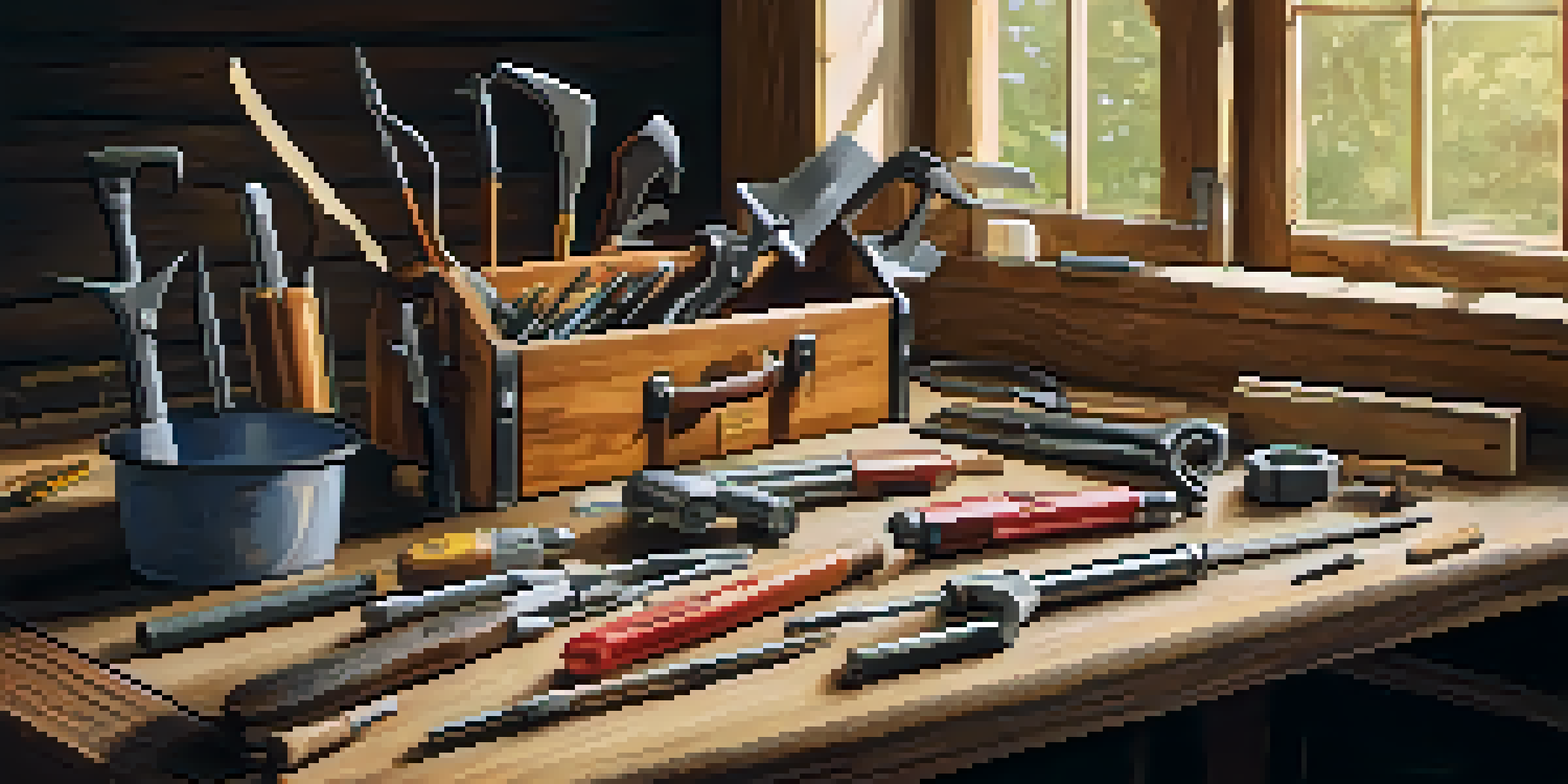Essential Tools for Homeowners: Creating a Repair Kit

Why Every Home Needs a Repair Kit
A well-stocked repair kit can save homeowners time and money. Instead of scrambling for tools during an emergency, having everything organized and accessible allows you to tackle problems as they arise.
The best way to predict the future is to create it.
From minor fixes like squeaky doors to larger issues such as leaky faucets, a repair kit empowers you to handle everyday home maintenance. This sense of preparedness not only boosts your confidence but also ensures your home remains in tip-top shape.
In essence, a repair kit is not just a collection of tools; it’s a homeowner’s best ally. It helps you respond quickly to issues, preventing small problems from turning into costly repairs.
The Basics: Essential Hand Tools to Include
Every homeowner's repair kit should begin with a set of basic hand tools. This includes a hammer, screwdrivers, pliers, and an adjustable wrench. These tools are versatile and can be used for a variety of tasks, from assembling furniture to making quick repairs.

Consider adding a level and a tape measure to ensure your projects are precise. Even simple jobs, like hanging a picture or installing shelves, benefit from these tools because accuracy is key to a professional-looking finish.
Every Home Needs a Repair Kit
A well-stocked repair kit saves time and money, allowing homeowners to handle maintenance tasks efficiently.
Lastly, a utility knife is a must-have for cutting tasks, whether you're opening packages or trimming materials. With these basics, you'll be well on your way to handling most home repairs.
Power Tools: When You Need Extra Muscle
For more significant projects, power tools can be game-changers. A cordless drill, for instance, makes drilling holes and driving screws a breeze. This tool cuts down on time and effort, allowing you to complete tasks quickly.
An ounce of prevention is worth a pound of cure.
A circular saw is another valuable addition for those who enjoy woodworking or home renovations. Whether you’re cutting boards for a new shelf or trimming down materials, this tool offers precision and power.
Lastly, consider a sander to achieve that smooth finish on your projects. Power tools can elevate your home repair game, making challenging tasks feel manageable.
Safety First: Protective Gear You Should Have
Before diving into repairs, don’t forget about safety gear. A good pair of safety goggles protects your eyes from dust and debris while working. It’s a simple step that can prevent serious injuries.
Hearing protection is another essential item, especially when using power tools. Earplugs or noise-canceling headphones can shield your ears from loud sounds, ensuring you can continue working comfortably.
Include Essential Tools
Basic hand tools like hammers and screwdrivers are crucial for tackling a variety of home repairs.
Lastly, a sturdy pair of work gloves can protect your hands from cuts and scrapes. Safety should always be a priority, and investing in proper gear is an essential part of any homeowner’s toolkit.
Organizing Your Repair Kit for Easy Access
An organized repair kit is crucial for efficiency. Start by selecting a sturdy toolbox or a dedicated shelving unit to house your tools. This will keep everything in one place and easy to locate.
Use drawer organizers or small containers to separate tools by type or size. Labeling each section can save time, especially when you’re in the middle of a project and need to find something quickly.
Regularly check and declutter your repair kit to remove any tools you no longer use. This ensures that what you have is relevant and ready for action when you need it.
Common Repairs You Can Tackle with Your Kit
With your repair kit in hand, there are numerous common repairs you can confidently tackle. From fixing leaky faucets to patching small holes in the wall, these tasks are manageable with the right tools.
Consider also minor electrical fixes, like changing a light switch or replacing a plug. With clear instructions and your basic hand tools, these tasks can be completed safely and efficiently.
Know When to Seek Help
While DIY repairs are empowering, some tasks require professional expertise to prevent potential damage.
Finally, you can even handle small outdoor projects, such as tightening loose fence boards or repairing garden furniture. Your repair kit opens the door to a world of DIY possibilities.
When to Call a Professional: Knowing Your Limits
While having a repair kit empowers you to tackle many tasks, it’s essential to know when to call in a professional. Jobs like major electrical work, plumbing issues, or structural repairs can be complex and may require specialized knowledge.
If you find yourself feeling overwhelmed or unsure, it's best to consult with an expert. Not only does this ensure the job is done right, but it also protects your home from potential damage.

Remember, there’s no shame in seeking help. A professional can save you time, stress, and possibly even money in the long run by addressing issues correctly the first time.